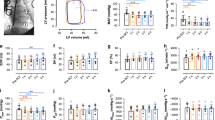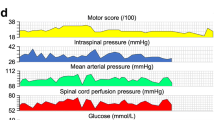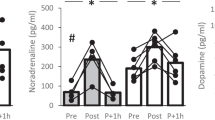Abstract
Many data are available concerning spinal cord blood flow (SCBF) and metabolism on various models and timing after spinal cord injury, however, detailed information on their exact relationship in the same injury model is lacking. This relationship is a crucial factor in the understanding of the pathophysiology of spinal cord trauma.
Rats were subjected to lumbar laminectomy or lumbar spinal cord compression trauma. 3 hours later, changes in SCBF were evaluated autoradiographically and changes in ATP, glucose and lactate levels were analyzed using substrate-specific bioluminescence techniques. Measurements were performed at the lesion site (segment L4), adjacent segments (L3 and L5) and at remote thoracic segments (Th8 to Th9).
Laminectomy alone did not change SCBF, both in thoracic and lumbar segments. In contrast, ATP levels were significantly reduced and lactate levels were increased at the lesion site and in adjacent lumbar segments at 3 hours after laminectomy, whereas glucose levels were not significantly changed. In animal subjected to additional compression trauma, SCBF was significantly reduced in segments L3, L4 and L5 paralleled by a significant ATP reduction and lactate increase. Glucose levels did not differ significantly from controls 3 hours after compression injury. This metabolic profile was also reflected in the remote thoracic segments. In contrast, SCBF was not reduced in thoracic segments of traumatized animals.
The observation that ATP was already significantly reduced and lactate increased in laminectomized segments and in remote thoracic regions after trauma signals that metabolic changes are sensitive indicators to spinal stress. The fact that posttraumatic metabolic profile differs from the pattern of hemodynamic and metabolic changes induced by ischemia, suggests posttraumatic mediators may be involved in the different regulation of the energy producing machinery.
Similar content being viewed by others
Author information
Authors and Affiliations
Additional information
Submitted: March 3, 2000; revision accepted: May 17, 2000
Rights and permissions
About this article
Cite this article
Mautes, A., Schröck, H., Nacimiento, A. et al. Regional Spinal Cord Blood Flow and Energy Metabolism in Rats after Laminectomy and Acute Compression Injury. Eur J Trauma 26, 122–130 (2000). https://doi.org/10.1007/s000680050010
Issue Date:
DOI: https://doi.org/10.1007/s000680050010




